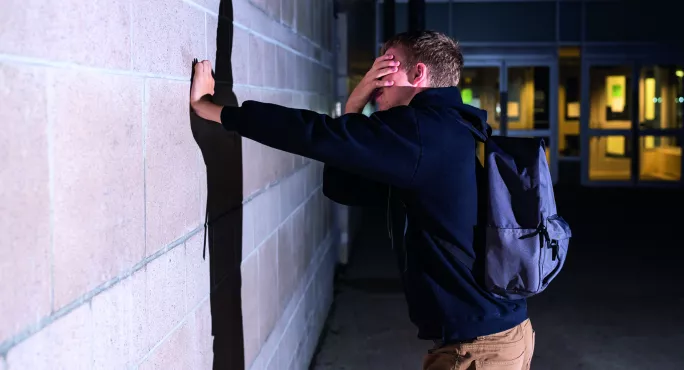As a teenager, I started cutting myself.
My school didn’t know what to make of me; let alone what to do to support me.
In an interview with the head of Years 10 and 11, about why I was behind on my coursework, I mentioned that I was depressed.
Quick read: 4 things teachers need to know about attachment theory
Quick listen: Why we need more support for mental health in primary
Want to know more? How to improve behaviour through empathy
“Who told you that?” I was asked.
I was a mouthy student and took delight in pointing out that it had been my GP.
Teachers ignored my long sleeves when everyone else was in short ones. They ignored the fact that I was always the first into school and the form room (this was when I self-harmed).
Why did I self-harm at school? Arriving early at school meant I was on my own. It was quiet. And I was unlikely to be discovered.
I don’t blame anyone for this. However, there are things that I pick up on in my students now that were ignored when I did them at school.
Mental health support
We know that self-harm rates among young people are on the rise, at the same time as funding for mental health is disappearing. Child and adolescent mental health services (Camhs) are under intense strain, with appointments only available for those in crisis.
Even after referral, it can remain difficult. The charity Young Minds reports that half of the children identified as needing treatment in 2017-18 waited more than 18 weeks. Only 14 per cent were seen within a month.
The school I currently teach in has managed to find the funds for a school counsellor. She can’t see everyone who needs her for as long as they need; but she is able to signpost everyone to appropriate services. She has been a valuable addition to our pastoral staff.
But how else can schools support those who are struggling with self-harm?
Self-harming: Spotting the signs
School communities should be on the lookout for signs that all might not be right with their students. Things like long sleeves in very hot weather and bruised knuckles are not evidence in and of themselves, but they can be an indication that all is not right.
Be available
Make sure that there are people available to talk to students if they need to talk. This can sometimes involve some emergency cover but it’s in the interest of the students for this to be possible.
Get the right training
Training can be useful, but it has to be good quality. I sat through a session on self-harm where the trainer stated that self-harm is always a sign of parental abuse. This is nonsense. It is the closest I have ever come to walking out of training.
There are several charities (such as MIND or Young Minds) that are happy to come into schools. Good training for teachers doesn’t necessarily focus on the reasons for self-harming. That is for other professionals to consider.
Instead, good training focuses on how to spot students at risk, how to refer them on to the appropriate care, how to liaise with parents and, importantly, how to support them and their friends in school.
Steer clear of stereotypes
Teachers should be aware that self-harming is something that happens and can appear in any age group. We have a student-led mental health committee that works on improving awareness of mental health issues within the school.
But it’s not just students. We need to keep an eye out for each other. If a behaviour change is worrying in a student, it is also worrying in a colleague.
Ask people if they are OK. Be prepared to listen.
Heidi Drake is an English and RSS teacher at Colchester Royal Grammar School in Essex




